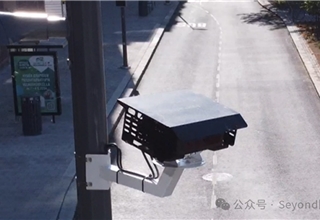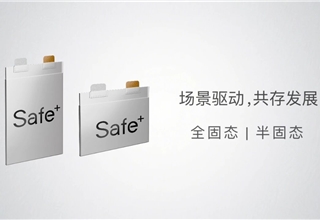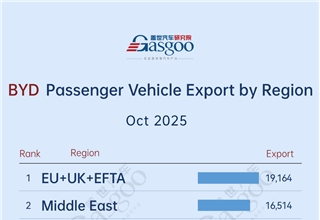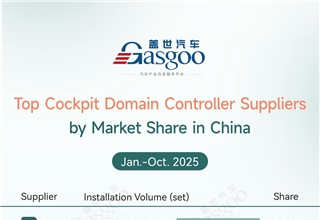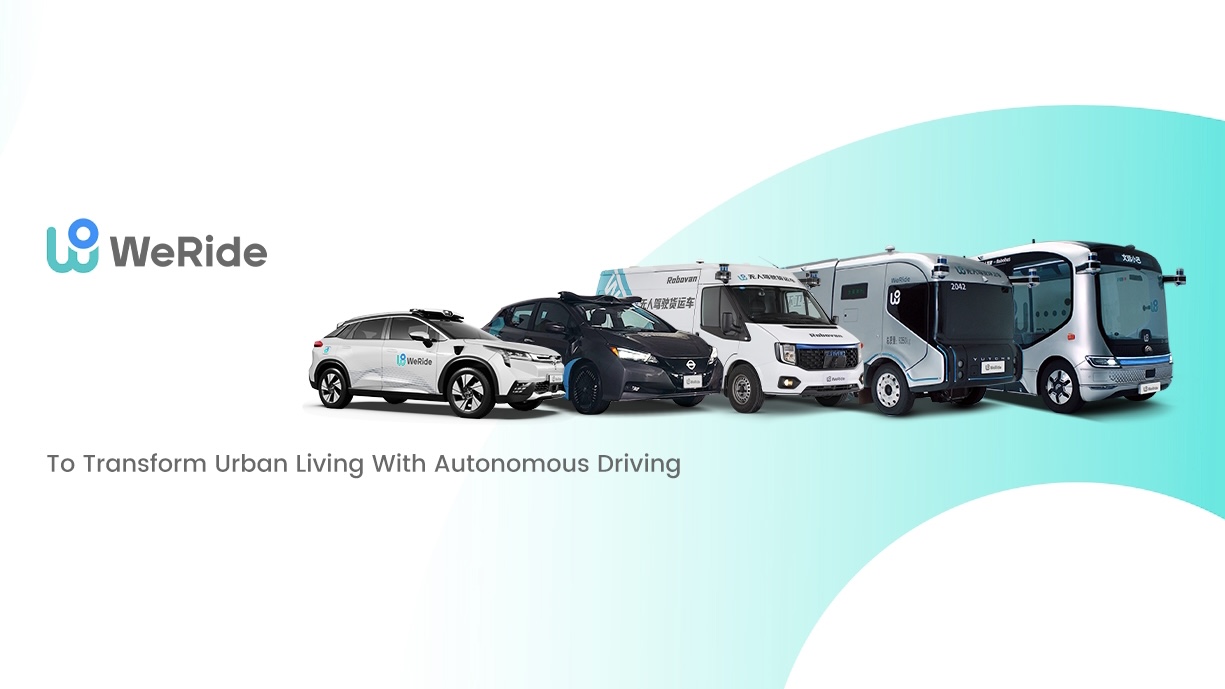
Product: WeRide Autonomous Driving All-rounded Product Mix
Description
WeRide launched China’s first Robotaxi commercial service, completely open to the public, in November 2019, in Guangzhou, China, covering an area of 144 square kilometers. A total of 307,363 trips were completed for more than 180,000 passengers during the first two years. WeRide has published China’s first Robotaxi Passenger Survey Report with Tsinghua University. The report shows that nearly 30% of the surveyed WeRide Robotaxi passengers are loyal riders who use the service at least once a week, and 37% of respondents say they are now ready for the fully driverless Robotaxi. At the end of 2020, WeRide launched China’s first fully driverless Robobus, a purpose-built model with no cockpit design. WeRide Robobus is the first intelligent driving vehicle that won the German Red Dot Award. It can run efficiently and smoothly facing various complicated open road conditions with a full-stack solution developed by WeRide, with a top speed of 40 km/h. WeRide Robobuses have been conducting road tests and operations in several cities, including Guangzhou, Zhengzhou, Nanjing, etc. In January 2022, WeRide launched the fully driverless Robobus service to the public on the Guangzhou International Bio Island in China’s Guangzhou. We are the first in the world to develop a purpose-built L4 Robosweeper designed for open roads. A Robosweeper can reach speeds of up to 40km/h and is designed with a cockpit-free design for fully autonomous operation. Since there is no driver cabin on board, our Robosweeper has a large tank volume of six tons and 3.5m3 of water capacity. It also has an NEDC range of 300 kilometers. A Robosweeper has the ability to operate 24 hours a day and under any weather conditions and can handle a number of urban cleaning tasks such as road edge cleaning, dust suppression, and high-pressure water jetting. In 2021, WeRide launched China’s very first Level 4 cargo van with Jiangling Motors (JMC), a major Chinese automobile manufacturer, and ZTO Express, a leading express delivery company in China. Robovan’s design is based on JMC’s battery electric vehicle (BEV) model with a fully redundant vehicle platform and WeRide’s full-stack software and hardware AD solutions. It will offer all-weather, round-the-clock service on urban roads with leading L4 AD capabilities. WeRide will work with JMC and ZTO Express to promote mass production and the commercialization of WeRide Robovan. Our L4 autonomous driving products and services have developed a full-stack algorithm, infrastructure, toolchain, and corner cases over the years, and we are now well-positioned to offer advanced driver-assist capabilities for passenger vehicles using L2+ and L3. Bosch, the world's largest Tier 1 supplier by market share, formed a strategic partnership with us to provide advanced driving products and services to OEMs. The partnership combines our leading algorithm and software stack with Bosch's solid industrialization capabilities and engineering competencies on top of a strong OEM customer base. We expect to start production of L2+/L3 advanced driving products and services in 2023.
Unique advantages
WeRide One is a highly compatible autonomous driving solution platform that can be easily adapted for a wide range of urban-centered target use cases. It consists of a full stack of industry-leading application software, a flexible set of hardware, and a comprehensive infrastructure software platform. WeRide One is a truly one-for-all and all-for-one platform for urban autonomous driving applications. Designed with high flexibility on both the software and hardware levels. Safety is a priority for WeRide One, with full redundancy at both the algorithm and system level. It is crafted with deep learning models that are self-evolving, empowered by closed-loop data-driven development methodologies. WeRde One's technical features include: Highly flexible: Our algorithm can self-improve faster based on feedback data from all our existing autonomous driving use cases. It also allows our technology to easily adapt to new vehicle types and explore new applications. Fully redundant: Fully Redundant System. WeRide One has full redundancy to ensure safe running during all range of driverless scenarios, on both the hardware and software layers as well as on the operation level. Meanwhile, our remote assistance ranges from offers additional support to our autonomous vehicles amid complex traffic situations and road conditions. Self-evolving: WeRide One employs deep learning models designed in-house for perception, prediction, and planning modules. Instead of using predefined rules, these models are designed to learn from driving data collected by all of our fleets. Apart from the WeRide One, as an autonomous driving company, WeRide Technologies has many leading advantages in various technical modules of autonomous driving. Perception: We adopt a sophisticated perception framework with dual paths. The combination, or "fusion" of the camera, LiDAR, radar, and inertial motion sensors also enables 360-degree sensing with redundancy for our autonomous vehicles free of blind spots, with best-in-class performance also at poor visibility ensured by AI-based enhancement algorithms. Most of our perception models can achieve a latency of less than 10ms. With our perception system, we can achieve 99% detection accuracy, and the object contour error is less than 5 centimeters. The modules provide results not only from detection but also from understanding of surrounding objects and scenes. Prediction: Our deep-learning prediction model has been trained with vast amounts of real-world traffic data. The best-in-class performance prediction model enables our vehicles to more intelligently with other road users. Hence, this results in a better quality of decision makings, like the reduced chance of being stuck in heavy traffic scenarios. At the 2nd second of the predicted trajectory, our algorithm achieved a displacement error of less than 0.2 meters. We are able to accurately predict 97% of bicycle cut-ins and 98% of automobile cut-ins using our prediction algorithm. Planning and control: The planning algorithm is based on a “search and optimize” approach. Millions of possible ego-car trajectories are sampled by a neural network model, and ultimately the system comes up with a dozen most likely proposals. Then an optimization model that takes into account comprehensive metrics, including safety, comfort, efficiency, etc., selects the optimal among the candidates. Our control module is capable of performing precise autonomous vehicle maneuvers at centimeter-level accuracy to put into action a safe and efficient driving trajectory. During road tests, our control system was able to maintain its stability up to 120 km/h. Localization: With our industry-leading positioning technology, we are able to pinpoint the location of our autonomous vehicles in real time within two centimeters. Our multi-sensor fusion approach ensures that we can rely on multiple sources of positioning and are therefore able to realize full-scenario localization. Leveraging the strength of our sensors in real-time are able to achieve a sufficient level of positioning accuracy for safe autonomous driving in various challenging scenes including tunnels, bridges, multi-layer interchanges, and while encircled by a dense forest of skyscrapers. Modular sensor suite: LiDAR, cameras and radars are all part of our sensor suite, which includes a universal set of interchangeable components. These sensors can be easily assembled into different form factors to provide long-range, peripheral, and perimeter sensing, catering to the differences in dimensions and other specifications of our different autonomous vehicles. We adopt a fast iterative design for our sensor suite and have successfully developed five generations of products in a short span of time. We released WeRide Sensor Suite 5.0 in June 2022. Simulation platform: By using high-fidelity and physically accurate simulations, we are able to prepare our autonomous vehicle for real-world use in a safe, scalable, and cost-effective manner. It supports flexible specifications of digital assets (such as urban layouts, buildings, vehicles, and traffic lights), traffic scenarios, and environmental conditions. It is capable of generating a wide range of real-world scenarios for the development and validation of our automatic fleet. Our simulation platform currently features more than 230,000 scenarios. Training efficiency is over 200 times higher on our simulation platform than in real road tests. Analytics platform: Our engineers are able to view all vehicles' real-time running data in a single user interface remotely. All videos, system logs, and raw data are also indexed and ready for speedy searches offline. New data are labeled and added to our training dataset on a weekly basis and our models are automatically and periodically refreshed with new data on our cloud platform. Our analytics platform contains a data sanitization component that automatically anonymizes all sensitive data such as license plate numbers, GPS information, and human face from the data visualization before access is granted to our engineers.
Application
WeRide is committed to developing safe and reliable autonomous driving technology, with commercial applications covering intelligent travel, intelligent freight, and intelligent sanitation. It has formed five product matrices: Robotaxi, Robobus, Robovan, Robosweeper, and Advanced Driving Solution. Robotaxi provides standard-fare autonomous taxi services to general consumers. WeRide launched the first Robotaxi commercial operation service in China for citizens in November 2019, with partners such as Nissan and GAC. Robotaxi has been commercially tested in five cities worldwide, including the UAE's first Robotaxi service. Currently, WeRide's services are available on multiple platforms such as WeRide Go, Google Play, Txai, Gaode Taxi, and Ruqi Travel, covering over 340 square kilometers of open service areas for more than 1,000 days of operation. Robobus provides all-around Robobus products and technical services to B-side customers such as local public transportation groups, industrial parks, scenic areas, and airports. WeRide has launched the first publicly-operated fully autonomous Robobus. Currently, it has been tested in 18 pilot operation cities. Starting in April 2022, WeRide partnered with Guangzhou Bus Group to demonstrate the application of autonomous driving on convenient routes in Guangzhou. It plans to become the largest autonomous bus public transportation in China. In September 2022, WeRide occupied two spots out of a total of 18 projects in the first batch of intelligent transportation pilot application projects announced by the Ministry of Transport (autonomous driving and intelligent shipping direction), including the "Guangzhou urban transportation service autonomous driving pilot application project" and the "Zhengzhou Rapid Transit autonomous driving pilot application project." The Guangzhou project plans to put 50 MiniRobobuses into operation. Robosweeper provides pure unmanned, zero-emission, and fully automated sanitation products and integrated solutions to municipal governments, groups, sanitation companies, industrial parks, scenic areas, and airports. WeRide cooperated with Yutong Group to develop the first zero-emission front-loading L4-level autonomous driving sanitation vehicle in mass production. Since April 2022, WeRide has launched more than 50 Robosweeper test operation fleets. The newly added spray disinfection function can complete the designated area's disinfection process without human intervention, assisting cities in better responding to public health events such as the COVID-19 pandemic. Only four months later, on September 1, WeRide reached a cooperation with the Huangpu District Urban Management and Comprehensive Law Enforcement Bureau in Guangzhou to launch China's first fully unmanned sanitation vehicle operation project on open roads. Robovan provides logistics enterprises, supermarkets, e-commerce, postal services, and other B-end customers with highly efficient Robovan products and technical services. Commercial pilots have been carried out with Jiangling Motors and ZTO Express, designed for pure unmanned operations to save labor costs, improve operational efficiency, achieve 24/7 uninterrupted transportation, and through a digital management platform, innovate the existing freight management model, improve the automation level of urban logistics, and help customers send and receive goods more quickly and conveniently. ZTO Express will jointly carry out commercial pilot operations of Robovan with WeRide, bringing a comprehensive freight transportation application scenario. WeRide also provides a full-stack advanced automatic driving solution for passenger cars and commercial vehicle OEMs, Tier-1 suppliers, etc., which can efficiently adapt to multiple models and make individual travel more intelligent, safe, and reliable. In May 2022, WeRide joined hands with Bosch, the world's largest Tier-1 supplier, to develop advanced intelligent driving solutions, jointly promoting the pre-production and market application of L2+/L3 level intelligent driving products that can be adapted to passenger cars and conform to vehicle regulations. This is one of the largest cooperation projects in the Chinese L2-L3 field in terms of order funds. In over 6 years of development, WeRide has not only developed world-leading autonomous driving technology but also translated it into reliable autonomous driving products, achieving commercial landing of autonomous driving in many cities worldwide, and has always been at the forefront of global commercialization of autonomous driving. As an autonomous driving technology enterprise, WeRide truly adheres to the concept of "To Transform Urban Living with Autonomous Driving" and makes autonomous driving truly enter people's lives.
Prospect
McKinsey predicts that China is likely to become the world's largest autonomous driving market in the future, with new vehicle sales and travel services related to autonomous driving generating more than $500 billion in revenue by 2030. According to McKinsey's key insights into the development of China's autonomous driving market: 1. Autonomous driving technology will deliver significant economic and customer value Autonomous driving will improve personal safety, reduce accidents by more than 90%, save drivers an average of 50 minutes a day, and help people who cannot drive (e.g., people with disabilities and the elderly) to travel autonomously; the new travel model brought about by autonomous driving can reduce the cost per kilometer compared to renting or buying a car. And, with fewer accidents, the cost of traffic jams and medical expenses are correspondingly lower. 2. The future of autonomous driving in China will be optimistic By 2030, autonomous driving will account for about 13% of total passenger miles traveled (PKMT) and will reach about 66% by 2040; self-driving passenger cars will reach about 8 million; by 2040, they will reach about 13.5 million; total sales of self-driving cars will reach about $230 billion by 2030 and about $360 billion by 2040; by 2030, the amount of orders for autonomous driving-based travel services will reach about $260 billion and by 2040 will reach about $940 billion. 3. Digitization of automobiles facilitates cost reductions, making the mass rollout of autonomous driving easier to achieve McKinsey predicts that 2025-2027 will be the inflection point for autonomous driving. Based on estimates of the underlying technology cost curve for autonomous driving, this will be the point of economic parity between autonomous driving and human driving. In other words, the total cost per kilometer of autonomous driving will be roughly equal to the cost of a driver driving a traditional car. After this inflection point, the market demand for autonomous driving will steadily increase. 4. The rollout of autonomous driving will grow in tandem with travel services China is rapidly promoting mobility services. Vehicles used for mobility services now account for about 10% of total vehicle sales in China. Private vehicles still dominate. Currently, 90% of PKMT comes from private passenger vehicles, with the rest coming from other travel services such as cabs and vehicle sharing. McKinsey predicts that by 2030, self-driving vehicles deployed by travel service providers will account for 11% of PKMT, and privately owned self-driving vehicles will account for 2%. By 2040, travel service providers will account for up to 55% of PKMT, and privately owned self-driving vehicles will account for only 11%. 5. Chinese consumers have a strong interest in autonomous driving According to a recent McKinsey study, 49 percent of Chinese consumers consider fully autonomous driving to be "very important" and another 49 percent consider it to be "optional. This is in stark contrast to German and U.S. consumers: only 16% of German and U.S. consumers consider fully autonomous driving to be "very important" and another 53% of German and U.S. consumers consider it to be "optional. Chinese consumers are willing to pay a premium of up to $4,600 for a self-driving vehicle, compared to $3,900 and $2,900 in the U.S. and Germany, respectively.






